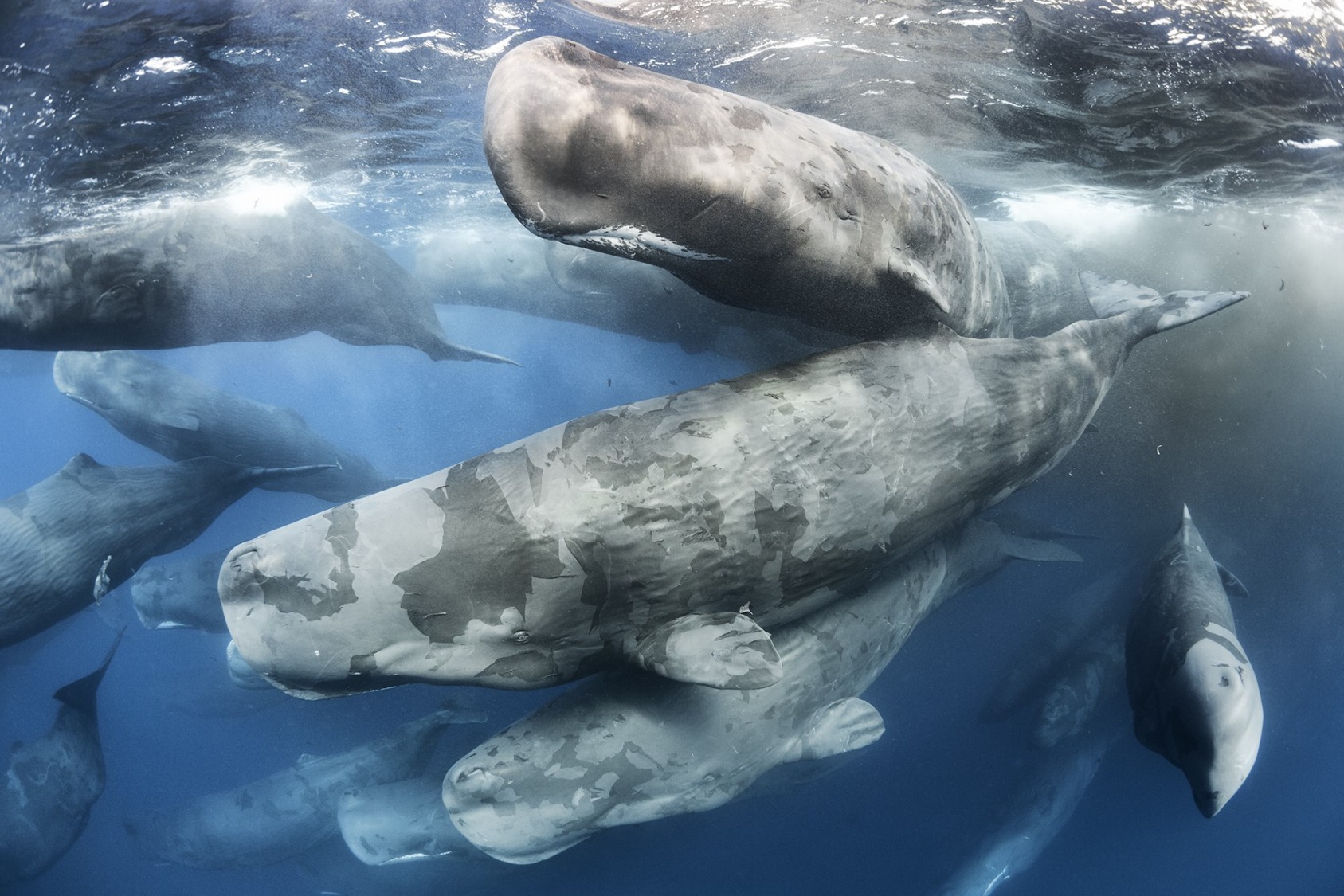
The Winners Of The NHM Wildlife Photography Awards
Giant gathering
Tony Wu, USA
Winner 2017, Behaviour: Mammals
Canon EOS 5D Mark III + 15mm f2.8 lens; 1/250 sec at f6.3; ISO 800; Zillion housing + Pro-One optical dome port.
Dozens of sperm whales mingled noisily off Sri Lanka’s northeast coast, stacked as far down as Tony could see. This was part of something special – a congregation of dozens, perhaps hundreds, of social units, like a kind of gathering of the clans. Sperm whales are intelligent, long-lived and gregarious, and groups play, forage, interact and communicate in different ways and have distinctive cultures. Aggregations like this could be a critical part of their rich, social lives but are rarely reported. Some two thirds of the sperm whale population was wiped out during the peak of industrialized whaling in the twentieth century. But commercial whaling was banned in 1986, and this kind of major gathering could be ‘a sign that populations are recovering’, says Tony, who has spent 17 years studying and photographing sperm whales. Tactile contact is an important part of sperm whale social life, but rubbing against each other also helps slough off dead skin. So the water was filled with a blizzard of skin flakes. More photographically challenging was the smearing of the camera-housing dome with oily secretions from the whales and thick clouds of dung released as they emerged from the gigantic cluster. But through continually swimming to reposition himself and the tolerance of the whales themselves, Tony got a unique photograph of the mysterious Indian Ocean gathering.